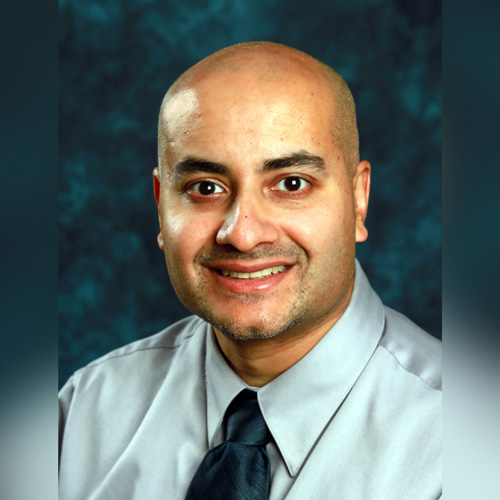Research Interests:
- Applications of Medical Physics to cancer diagnosis and treatment
Biography
Computational methods are now playing a larger role than ever in all aspects of science, including the diagnosis and treatment of disease. No other technology has seen such tremendous advances in the last half century as computer technology. The exponential advances in computer power make it critically important to understand its potential, and leverage its capabilities in our fight against cancer. As a medical physicist, I am interested in applying computational techniques to problems in radiation medicine.
Positions
Roswell Park Comprehensive Cancer Center
- Assistant Professor of Oncology
- Department of Radiation Medicine
University at Buffalo
- Assistant Professor, Medical Physics Program
Background
Education and Training
- PhD - Department of Physics, State University of New York at Buffalo, Buffalo, NY
- MS - Department of Physics, State University of New York at Binghamton
- BSc - Departments of Mathematics and Physics, University of Toronto
Research Overview
A large and promising branch of computation is optimization, or techniques for selecting values of independent variables that maximize or minimize a particular parameter, or goal. In radiation oncology, there is the goal of maximizing the radiation dose delivered to the tumor region, while at the same time minimizing the dose absorbed by healthy tissue. This is accomplished by varying the independent parameters (such as radiation beam energy, intensity, shape, and delivery geometry) of a treatment plan.
One exciting clinical treatment modality that incorporates these ideas is intensity modulated radiation therapy, or IMRT. Our recent work has focused on applying principles of computation to the optimization of patient-specific parameters in IMRT. We have explored promising optimization techniques, such as the genetic algorithm, which is based on ideas from biological evolution. These methods become even more powerful when implemented in a distributed-computing framework. To this end, we have formed a collaboration with the Center for Computational Research (CCR), an academic supercomputing center that forms part of UB’s Center for Excellence. By employing the CCR’s computational resources, we have applied the genetic algorithm to improve IMRT treatment plans.
Another project involving optimization addresses the patient setup problem: how do we best position a patient for a complex radiation treatment, ensuring that he or she is in the correct 3D location and orientation? We are investigating a novel approach to this problem, by using optical information obtained from a regular digital camera, and applying optimization techniques to determine the 3D geometric parameters accurately. This method will allow us to improve patient setup without subjecting the patient to increased ionizing radiation exposure.
Publications
Bhagroo, Stephen, Samuel B. French, Joshua A. Mathews, and Daryl P. Nazareth. "Secondary monitor unit calculations for VMAT using parallelized Monte Carlo simulations." Journal of applied clinical medical physics 20, no. 6 (2019): 60-69.
Mathews, Joshua, Samuel B. French, Stephen Bhagroo, Ankit Pant, and Daryl P. Nazareth. "Enhanced optimization of volumetric modulated arc therapy plans using Monte Carlo generated beamlets." Medical Physics 47, no. 12 (2020): 6053-6067.
Malekmohammadi, Mehrdad, Keivan Dabiri, Joshua Mathews, Daryl P. Nazareth, Hirotaka Tamura, and Ali Sheikholeslami. "A Hamiltonian Engine for Radiotherapy Optimization." In 2020 42nd Annual International Conference of the IEEE Engineering in Medicine & Biology Society (EMBC), pp. 5085-5088. IEEE, 2020.
Nazareth, Daryl P., and Jason D. Spaans. "First application of quantum annealing to IMRT beamlet intensity optimization." Physics in Medicine & Biology 60, no. 10 (2015): 4137.
